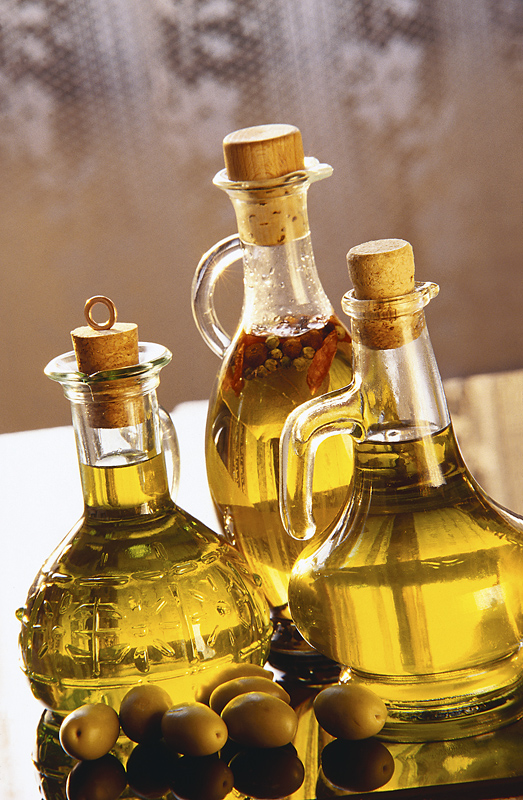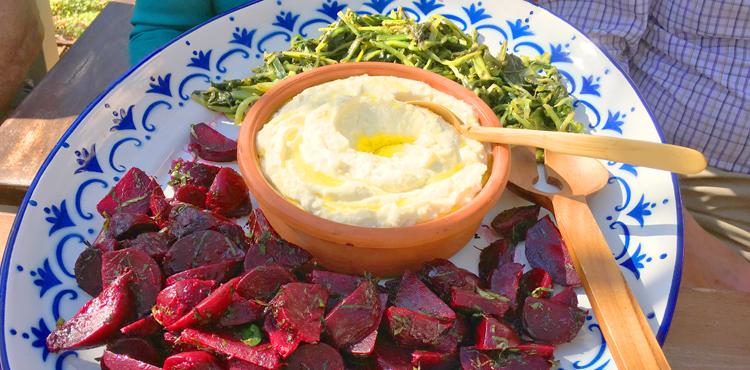Share This
You may know fritters by any number of other names: croquettes, pancakes, latkes, keftedes, balls or tortillas, just to name a few. The preparation is universal, including in the Mediterranean.
A fritter is a name applied to a variety of food that is battered and either pan-fried or deep-fried. A fritter can be sweet or savory and made with anything from fruit to vegetables to legumes to meat and seafood. In the Mediterranean, especially in Greece and southern Italy, the cooking oil of choice is olive oil.
In fact, Greeks are renowned for their copious use of olive oil. It’s estimated that the average Greek household consumes 20 kilograms of olive oil per person per year; that’s 44 pounds or 705 ounces per person per year, which translates to 3 to 4 tablespoons of olive oil per day per individual. Olive oil is deep-rooted in Greek history, culture, and way of life. It’s used to make a variety of products (e.g., soap, cosmetics, skincare), consumed raw, and is the essential cooking oil for just about everything and anything, from grilling, roasting, preserving, frying and even used in desserts. (More on 12 Great Ways to Use Olive Oil).
Made with all manner of wild or garden vegetables—from tomatoes to leafy greens to fennel to cauliflower to zucchini/squash—fritters are an economical and smart way to make a filling meal with just a handful of ingredients. Basically, they consist of grated or chopped vegetables that have been mixed with batter and fried in olive oil, of course.
In Greece, you’ll commonly find spanakokeftedes (spinach fritters), domatokeftedes (tomato fritters), pseftodeftedes (sun-dried tomato fritters), and kolokithokeftedes (zucchini fritters). In Turkey, fritters made from zucchini are referred to as kabak mücveri. In Italy, come spring and running through the summer, when squash blossoms are in full bloom, you’ll find frittelle di fiori di zucca (squash blossom fritters). The delicate squash blossoms are dipped in batter and fried in olive oil, until golden and crunchy on the outside, yet still light and airy. Fritters can get even the pickiest of eaters excited about vegetables, and are a great way to incorporate veggies, legumes, and even fish into easy-to-eat finger foods.
That being said, fritters are certainly not confined to just vegetables. In Sicily, chickpea fritters, panelle, are one of Palermo’s most popular street foods and are sold in friggitoria or fry shops and restaurants all over the city. Essentially, a mixture of water and chickpea flour cooked into a porridge, then cooled until firm, cut into pieces, and fried in olive oil until golden brown and puffed up slightly.
Falafel originated in Egypt. Today, it is a decidedly popular street food in the Mediterranean and the Middle East. It’s a deep-fried fritter made with chickpeas, fava beans, or a combination of the two, along with fresh herbs and spices. As with any fried food, falafel are best eaten immediately after fried, when they are crispy and crunchy on the outside and fluffy on the inside. Stuffed into a pita with chopped and pickled vegetables, hot sauce, and tahini sauce, it is no doubt that this perfect combination is considered the national dish of Israel.
As for seafood, tortillitas de camarones are shrimp fritters from the province of Cádiz in Andalusia, southwest Spain. In Cadiz, these fritters are flat and crispy, made with tiny shrimp found in the region and chickpea flour, the latter which lends the batter its golden hue and earthy bite. Bacalao (in Spain) or baccalà (in Italy) are batter-fried salt cod fritters. While typically fried in vegetable oil in some parts of the Mediterranean, in Greece, not surprisingly, olive oil is favored. The Greek version of salt cod fritters is traditionally served with a garlicky dipping sauce called skordalia.
A donut or beignet is also considered a fritter. In Greece, loukomades are sweet, bite-sized dough that have been deep fried until crispy and then soaked in a hot honey syrup, sprinkled with cinnamon, and garnished with finely chopped walnuts or toasted sesame seeds. Similarly, asamat are Lebanese and lokma are Turkish crisp doughnut balls that have been fried in olive oil and then soaked in a simple syrup.
Savory or sweet, for snacks, the main attraction or the finishing touch, Mediterranean fritters are a special treat, all their own.
Want biweekly Med Diet information and recipes in your Inbox? Sign up for our Fresh Fridays newsletter by clicking the Subscribe button at the bottom of this page!
Join the Make Every Day Mediterranean Club Facebook group for additional information and support.




Add a Comment